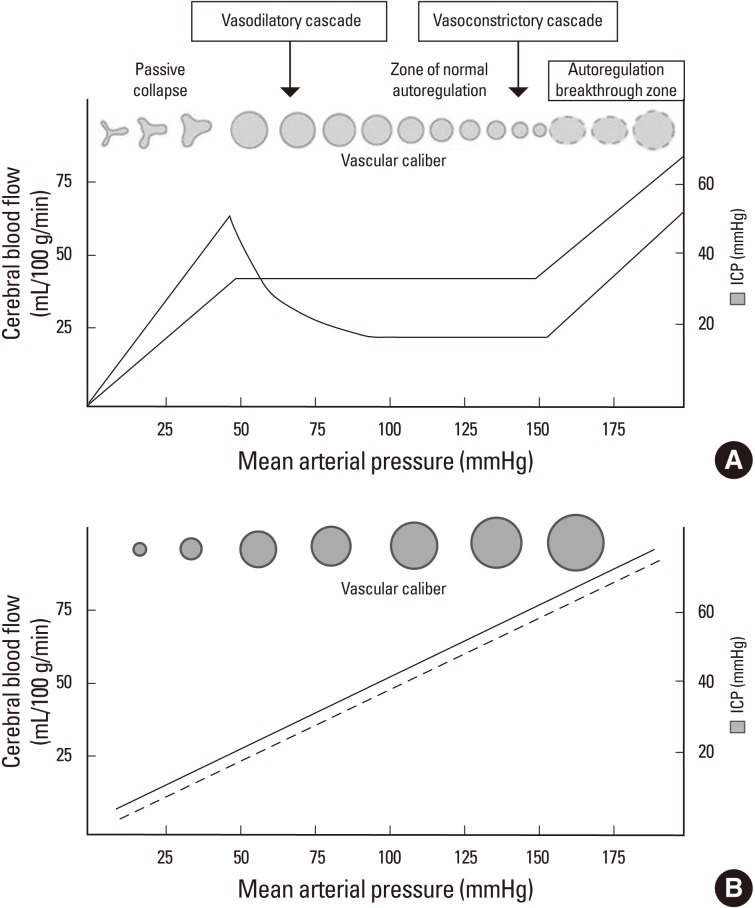Figure 3.
Relationship among the cerebral hemodynamic parameters. In cases with intact cerebral autoregulation, constant cerebral blood flow is maintained within autoregulating ranges of blood pressure. As the blood pressure drops, cerebral blood vessels need to dilate in order to maintain constant blood flow, which translates into surges in the intracranial pressure (A). In cases where autoregulation is disrupted, the capacity of the blood vessel is passively dependent on the perfusion pressure. Therefore, the correlation between intracranial pressure and blood pressure is linear (B). (This figure was modified from Crit Care Clin 2007;23:507-538 and Neurocrit Care 2004;1:289).

